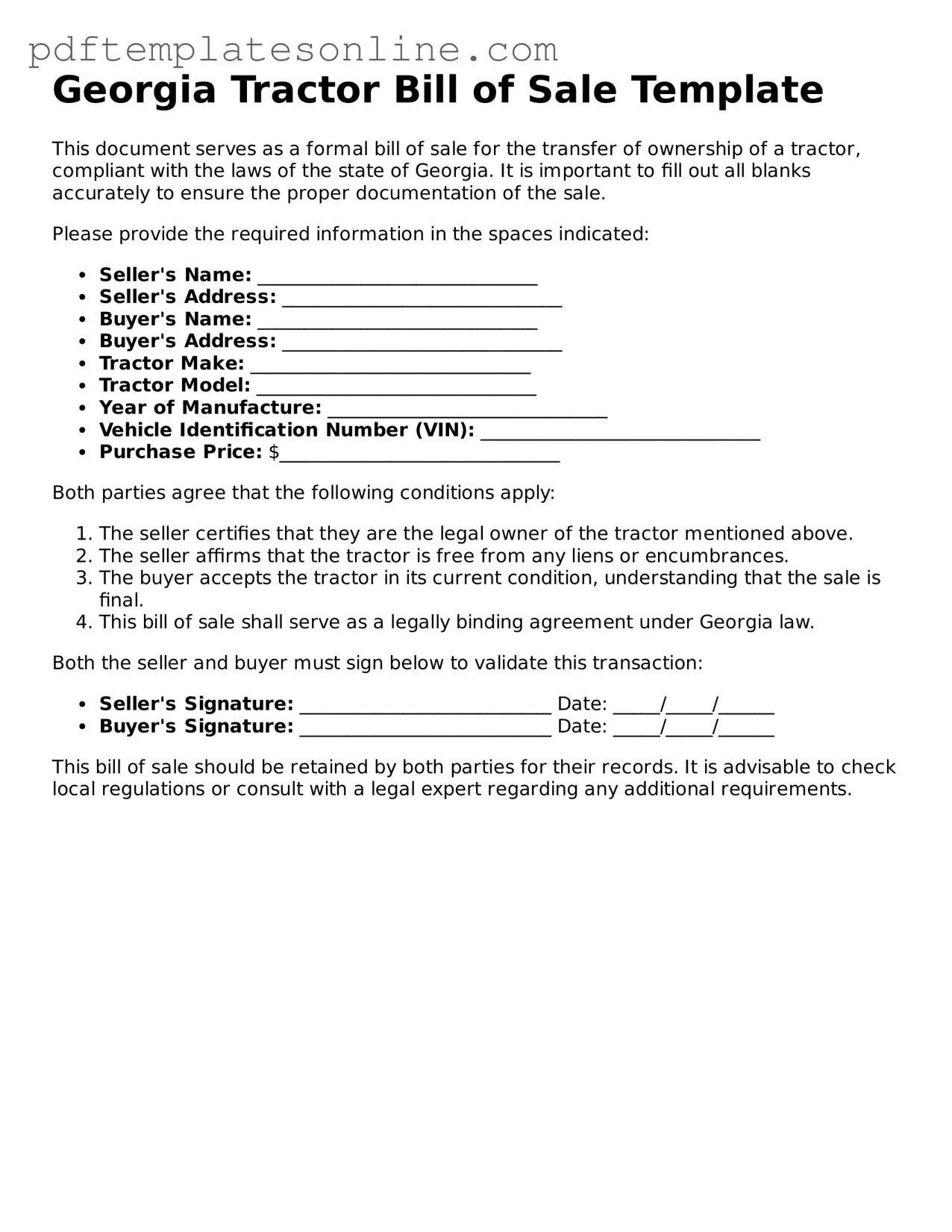Filling out the Georgia Tractor Bill of Sale form can seem straightforward, but many people make common mistakes that can lead to issues down the line. One frequent error is failing to include all required information. Essential details such as the buyer's and seller's names, addresses, and signatures are crucial. Omitting even one piece of information can render the document incomplete.
Another common mistake is not providing an accurate description of the tractor. The form requires specific details, including the make, model, year, and Vehicle Identification Number (VIN). Inaccurate descriptions can cause confusion or disputes in the future. Always double-check that these details match the tractor's documentation.
Some individuals forget to indicate the purchase price. This information is vital for both parties and for tax purposes. Leaving this blank can lead to complications when registering the tractor or during tax assessments.
Additionally, people often neglect to date the bill of sale. A date is essential as it marks the official transfer of ownership. Without it, there could be questions about when the sale occurred, which might affect warranties or liabilities.
Another mistake involves not having the document notarized when required. While notarization is not always necessary for a bill of sale in Georgia, certain situations may call for it. Failing to notarize can lead to challenges in proving the authenticity of the document.
Some sellers might also forget to provide a copy of the bill of sale to the buyer. Both parties should retain a copy for their records. This document serves as proof of the transaction and can be helpful in case of disputes or future sales.
People sometimes use outdated forms or templates. The Georgia Tractor Bill of Sale form may change over time, so it’s important to ensure that the version being used is current. Using an outdated form can lead to legal complications.
Another mistake is not reviewing the completed form before submission. Errors can easily slip through, and a quick review can catch mistakes before they become an issue. Taking the time to double-check can save headaches later.
Lastly, some individuals might overlook the importance of understanding the terms of the sale. Knowing whether the sale is "as-is" or if there are warranties involved is crucial. This understanding helps both parties know their rights and responsibilities after the sale.
